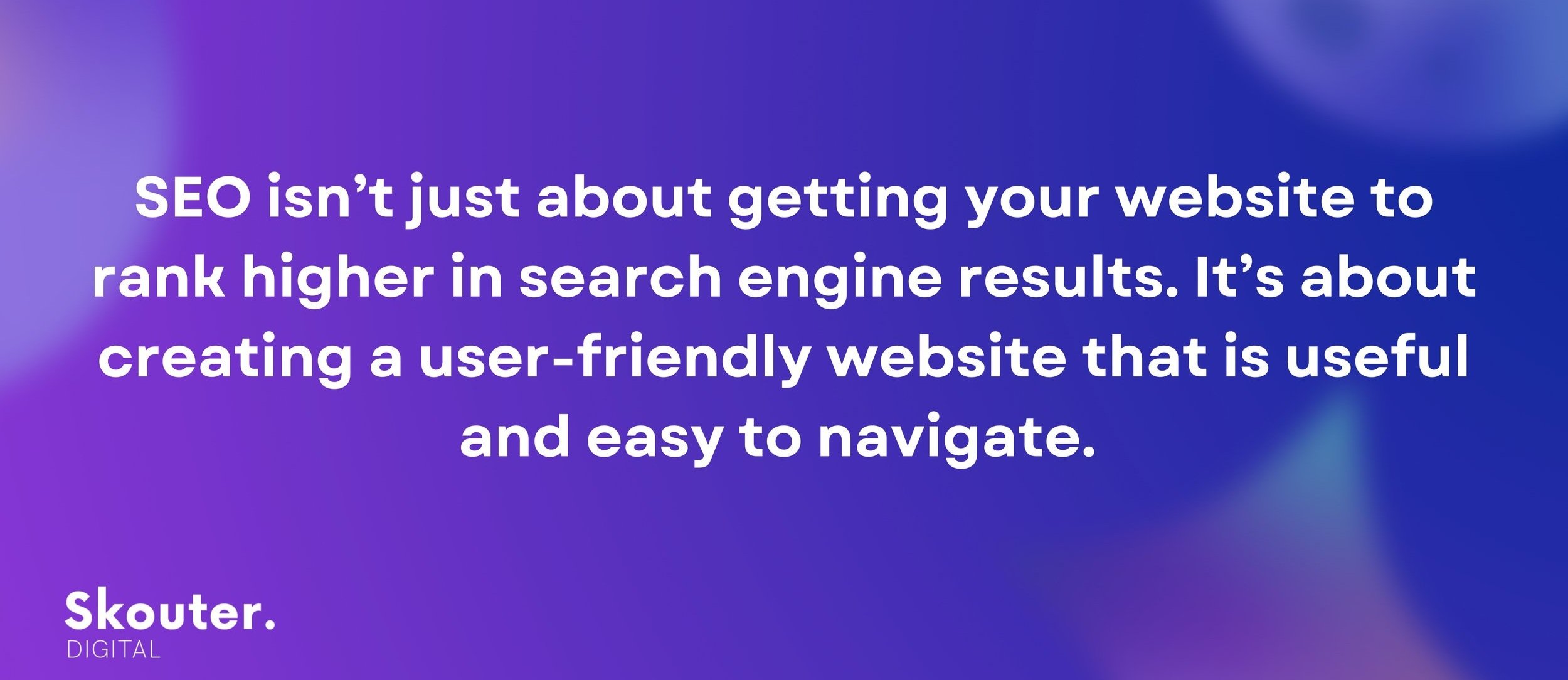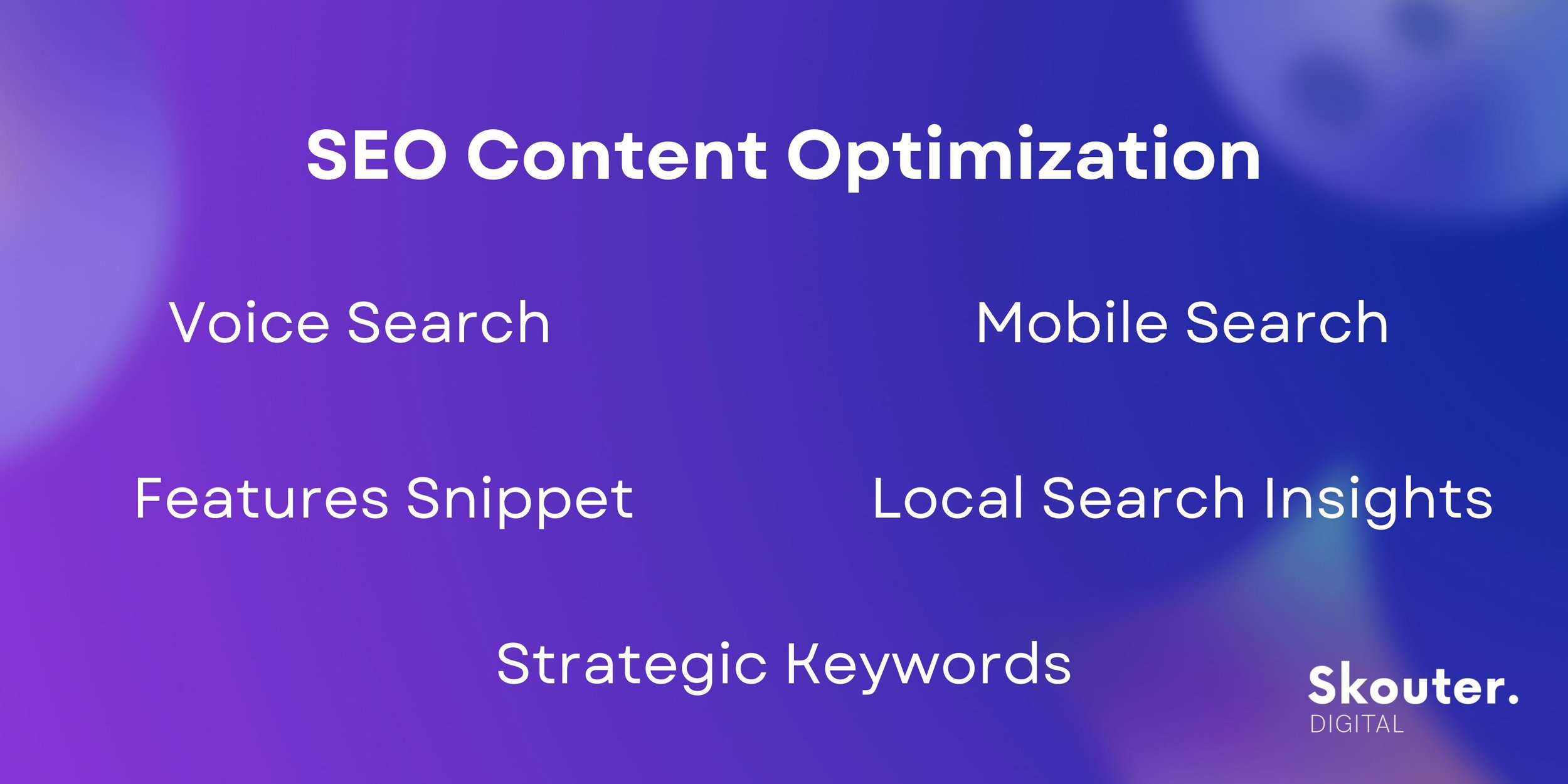As a business owner, you understand the power of a good online presence. You know that your website is the cornerstone of your online presence and that having an effective search engine optimization (SEO) strategy is essential to your success. But what exactly is SEO, and how do you create a winning SEO strategy?
In this blog post, we will dive into the details of SEO and discuss the essential strategies, tools, and techniques you need to supercharge your SEO strategy and take your business to the next level.
Understanding SEO and why it is important
Search engine optimization is an essential component of digital marketing. It involves optimizing your website and content to make it appear higher in search engine results. The higher your website appears in the search engine rankings, the more likely it is to get seen by potential customers and generate leads.
SEO isn’t just about getting your website to rank higher in search engine results. It’s about creating a user-friendly website that is useful and easy to navigate. This helps to improve the overall user experience and ensures that visitors find what they need quickly and easily.
SEO also involves optimizing the content. Creating relevant and search-engine-optimized content is the key to having a successful SEO strategy. In other words, content should contain the right keywords, be well-structured, and be engaging and informative.

The top SEO strategies
You now have a basic understanding of search engine marketing, let’s look at some of the top SEO strategies you can use to have supercharged SEO marketing.
The first strategy is keyword research. Keyword research is the process of finding the right keywords to target in your SEO campaigns. This involves researching the keywords that your target audience is using to search for your product or service. Once you’ve identified the right keywords, you can incorporate them into your website and content to improve your search engine rankings.
Another important SEO strategy is link building. Link building involves creating links from other websites. This helps to improve search engine rankings and drive more traffic to your website.
Content optimization is also key. This involves optimizing the content for search engines by including the right keywords, formatting content in an easy-to-read way, and ensuring that your content is informative and engaging.
How to create an effective SEO strategy
The basics of SEO and some of the top strategies are now clear to you, let’s look at how to create an effective SEO strategy.
The first step is to identify the target audience. This will help you determine the right keywords to target and the type of content that will be most effective in reaching your audience.
Once you’ve identified the target audience, you can start researching keywords. Use tools like Google Keyword Planner to identify the right keywords to target in your SEO campaigns.
Once you’ve identified the right keywords, you can start optimizing your website and content to include those keywords. In accordance with your SEO strategy, you will be able to increase search engine rankings and make your content more visible.
Another important step is to create quality backlinks. This involves creating links from other websites to yours. This helps to improve search engine rankings and drive more traffic to your website.
Finally, you should track and measure your results. By tracking your results, you can see which strategies are working and which need to be improved. This will help you refine your SEO strategy and ensure that you’re getting the most out of your SEO campaigns
SEO content best practices
Now that you understand how to create an effective SEO strategy, let’s look at some SEO content best practices that can help you supercharge your SEO marketing.
The first best practice is to write content that is informative and engaging. This means writing content that is valuable to your target audience and that is well-structured and easy to read.
Another best practice is to use keywords strategically. This means using keywords in the right places, such as in the title, headings, and body of your content. It also means using related keywords and phrases to ensure that your content is optimized for search engines.
It’s also important to optimize your content for different devices. This means ensuring that your content is easy to read and navigate on both desktop and mobile devices. This will help to enhance search engine rankings and ensure that your content is seen by the right people.
Finally, it’s important to use visuals. Visuals, such as images, videos, and infographics, can help to make your content more engaging and boost search engine rankings.

SEO tools and techniques
You now have a better understanding of SEO basics and some best practices, let’s look at some of the tools and techniques you can use to supercharge your SEO marketing.
The first tool you should use is Google Search Console. This tool helps you to monitor and analyze your website’s performance in search engine results. It also helps you to identify any errors on the website and optimize your content for better rankings.
Another important tool is Google Analytics. It helps you to track and measure your website’s performance and analyze user behavior. You can refine your SEO strategy by identifying any areas for improvement.
You should also use SEO tools such as Ahrefs and SEMrush to track the website's performance and analyze the competitors’ strategies. These tools provide valuable insights into your website’s performance and help you to have a refined SEO strategy.
Finally, you should use social media to promote your content. Social media is a great way to reach the target audience and drive more traffic.
Optimizing for voice search
Voice search is becoming increasingly popular, so it’s important to optimize your website and content for voice search. This involves ensuring that your content is optimized for natural language and that it contains the right keywords.
Voice search is becoming increasingly popular, so it’s important to optimize your website and content for voice search. This involves ensuring that your content is optimized for natural language and that it contains the right keywords.
It’s also important to optimize your content for featured snippets. Featured snippets are short snippets of content that appear at the top of search engine results. Optimizing your content for featured snippets can help to increase search engine rankings and drive more traffic to your website.
Finally, you should optimize your content for local search. This means optimizing your content for local keywords and ensuring that your business is listed in local directories. This will help to optimize search engine rankings and ensure that your content is seen by the right people.

Optimizing for mobile search
As more and more people are using mobile devices to search for information, it’s important to optimize your website and content for mobile search.
The first step is to ensure that your website is mobile-friendly. This means ensuring that your website is easy to navigate and that it loads quickly on mobile devices.
You should also optimize your content for mobile search. This means ensuring that your content is easy to read and navigate on mobile devices and that it contains the right keywords.
Finally, you should optimize your website for local search. This means optimizing your content for local keywords and ensuring your business is listed in local directories. It will help you boost search engine rankings and ensure that the right people see your content.
How to track results and measure ROI
Now that you understand the basics of SEO and some of the tools and techniques you can use to supercharge your SEO marketing, let’s look at how to track your results and measure your ROI.
The first step is to set up tracking tools such as Google Analytics. This will help you to track your website’s performance and measure your ROI.
You should also use SEO tools such as Ahrefs and SEMrush to track your website’s performance and analyze the competitors’ strategies. As you progress, you'll be able to identify areas that need improvement.
Finally, you should use A/B testing to test different SEO strategy actions and identify which ones are the most effective. You'll be able to refine your SEO strategy and get the best results from your SEO campaigns by doing this.
Common SEO mistakes to avoid
The first mistake to avoid is keyword stuffing. Keyword stuffing is the practice of cramming your content with keywords in an attempt to boost search engine rankings. This is not effective and can actually have a negative impact on your search engine rankings.
Another mistake to avoid is creating low-quality content. This means creating content that is not informative or engaging and that contains too many keywords. Search engine rankings will be negatively affected by this and drive away potential customers. Using LLMs to generate content can cause this problems as well. To learn more about using LLMs please visit this article.
Finally, you should avoid buying backlinks. Backlinks are links from other websites to yours. While backlinks can help to enhance search engine rankings, buying backlinks can have a negative impact on your search engine rankings and can even get you penalized by Google.

Conclusion
Search engine optimization (SEO) is an essential component of digital marketing. It involves optimizing the website and content to make it appear higher in search engine results.
To create a winning SEO strategy, you need to identify the target audience, research the right keywords, optimize your website and content for search engines, create quality backlinks, and track and measure the results.
You should also use SEO tools and techniques, such as Google Search Console and Google Analytics, to have better SEO marketing results.
Finally, you should avoid common SEO mistakes such as keyword stuffing and buying backlinks.
By following these tips and using the right SEO strategy, tools, and techniques, you can boost your SEO marketing and take your business to the next level.
With your new SEO strategy in hand, you can begin implementing it! Start optimizing your website and content today and take your business to the next level!
Tags:
insights
.jpg?width=520&height=294&name=Skouter%20Digital%20Blog%20Posts%20(3).jpg)


Comments